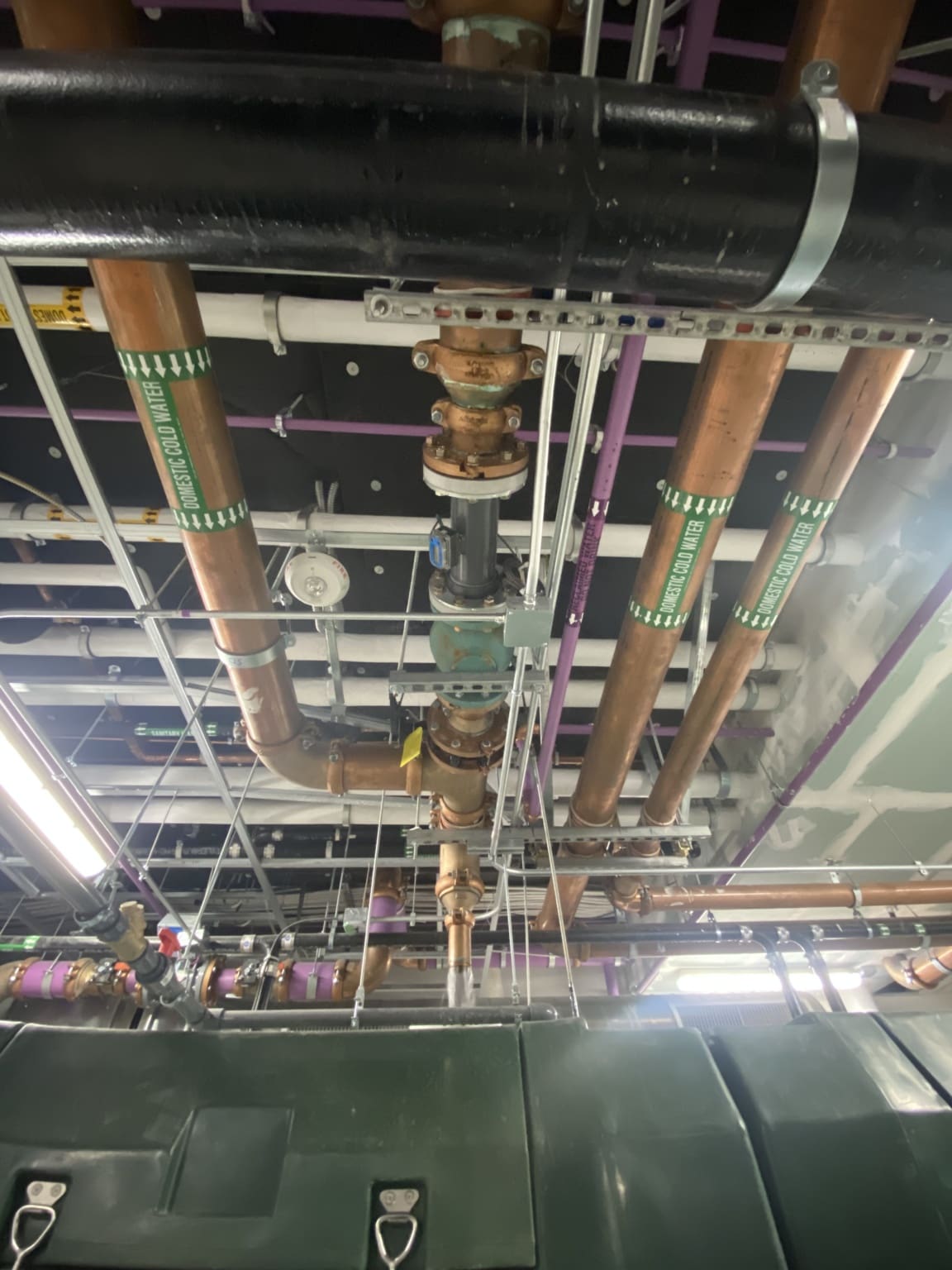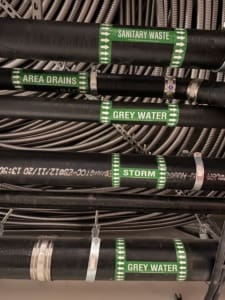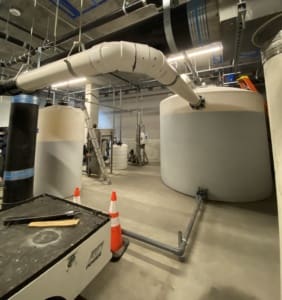Defining the different wastewater sources


There are many different types of wastewater, but not all are created equal. At Epic, defining the type of system and the source of wastewater is one of the first items we discuss with any new project because each system has specific treatment, design, and regulatory considerations.
It’s important to understand the quantity and quality of a project’s wastewater before we can evaluate the best system for use, estimate the return on investment for the client, and determine the impact a reuse system will have on a specific project.
The different types of wastewater sources for onsite water reuse systems
- Rainwater and stormwater encompass all water that hits the roof and hardscape areas of a project during the downfall of wet weather. Rainwater is defined as rainfall collected from the building rooftops, while stormwater encompasses rainfall collected from the site hardscape and landscape. Both rainwater and stormwater are relatively clean, so the bulk of the treatment system is typically filtration and disinfection to ensure compliance with recycled water quality, though stormwater may need additional filtration depending on the site.
- Condensate refers to the water that is generated as a byproduct of the condensation process originating from sources such as air conditioning systems, refrigeration units, and steam production. Condensate collection is a huge supplier of water; a typical commercial air conditioner system in a large building (500K+ sq ft) in a warm climate could generate up to 1,000 gallons of condensate per day.
- Greywater is a wastewater source collected from plumbing fixtures that do not contain human or food waste. This includes showers, bathroom sinks, and washing machines. Separating greywater requires dual sanitary systems, effectively doubling the amount of waste piping needed on a project. However, as compared to blackwater, greywater contains lower levels of contamination which simplifies the treatment process.
- Blackwater is wastewater from all plumbing fixtures in a project, meaning all greywater fixtures, but also includes wastewater from water closets, toilets, urinals, dishwashers, and kitchen sinks. Blackwater requires more extensive treatment as compared to greywater due to its higher level of organic matter, and more frequent water quality sampling and reporting may be required, depending on the project jurisdiction.
If you’re deciding between the most common system installation types, greywater or blackwater, there are many considerations to weigh. Learn more about the differences and costs of greywater vs blackwater systems.
The process for treating wastewater

The process for treating wastewater typically involves several steps to remove contaminants and pollutants before it can be safely discharged or reused regardless of its source. Wastewater is mostly made up of water, but it can also contain organic solids, nutrients (like phosphorus, potassium, and nitrogen), fats, oils, grease, pathogens, and other minerals. The collection, treatment, and reuse applications will vary depending on the source of the wastewater. Epic can help guide you through deciding which onsite reuse solution is right for your project.
Collection and prefiltration
The first step in any treatment system is a prefiltering process, as wastewater contains debris and possibly organic solids (if the wastewater source is from a blackwater project) that needs to be removed prior to any treatment step. The filtered water is then sent to an equalization holding tank, which serves to buffer out flow peaks, thereby allowing us to optimize system sizing.
Treatment and disinfection
The collected wastewater undergoes an advanced treatment process to remove contaminants and impurities. The treatment methods can vary depending on the level of purification required, but they often include physical, chemical, and biological processes.
Epic utilizes membrane bioreactor (MBR) filtration, which is a biological treatment process combined with an ultrafiltration membrane (membranes with a nominal pore diameter of .04 microns) to capture particles and organisms. Water then undergoes multiple steps of disinfection using ultraviolet light and chlorine, which renders the water safe for reuse in non-potable applications. Learn more about how our technology works.

Storage
After treatment, the treated water is stored in tanks or reservoirs on the premises until it is needed for reuse in the building. Storage provides a buffer to accommodate fluctuations in water demand and treatment capacity.
Distribution and reuse
The recycled water can be used for various non-potable applications such as toilet and urinal flushing, cooling tower makeup, irrigation, and clothes washing.
Epic’s onsite water reuse systems are capable of recycling up to 95% of a project’s wastewater for non-potable applications. This leads to less water demand, higher operational efficiency, and greater water security.

